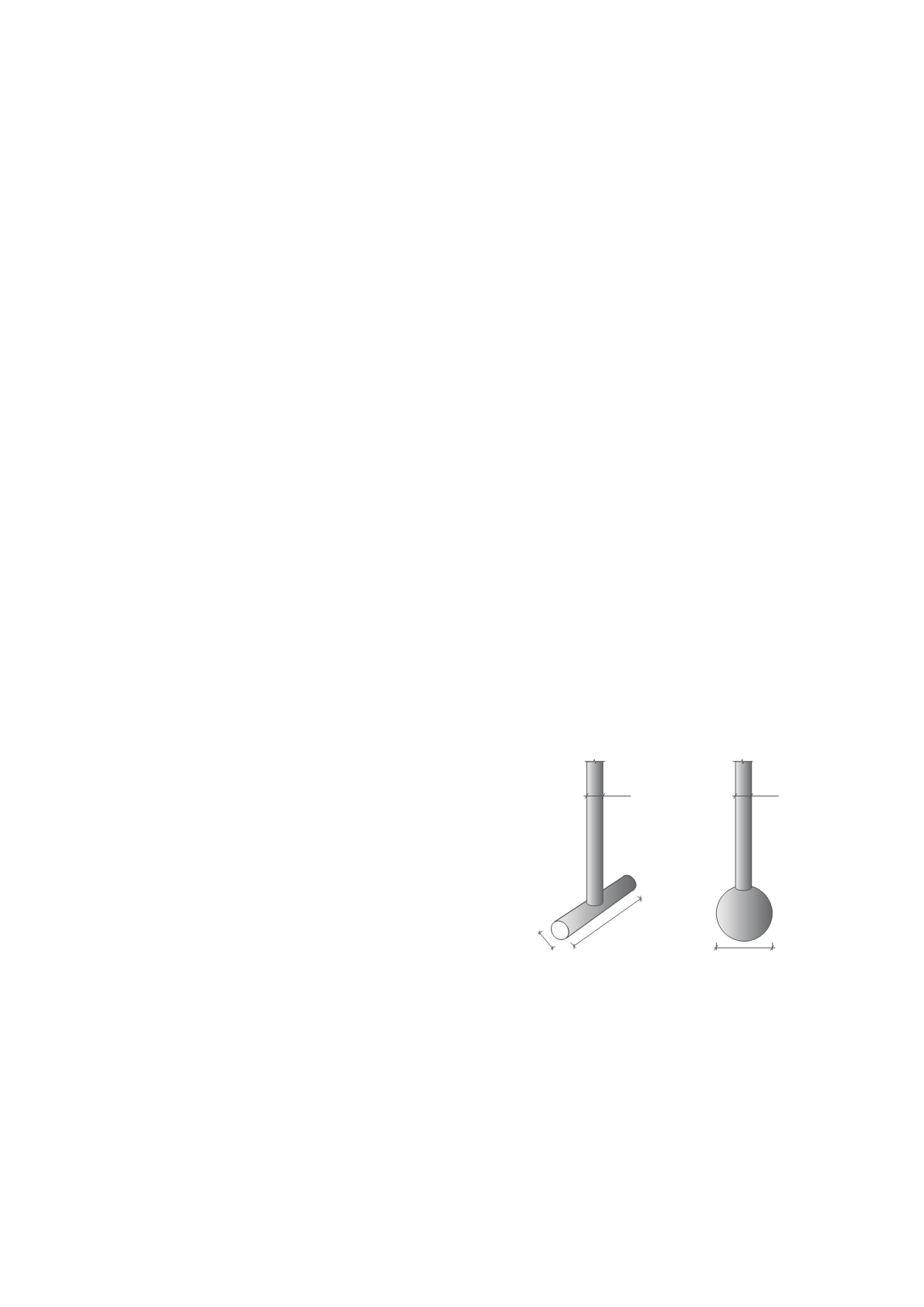
781
Analytically and experimentally based resistance factors for "full-flow"
penetrometers
Résistance-facteurs pour "full flow" pénétromètres, basé sur résultats analytiques et expérimentaux
Pinkert S.
Department of Civil Engineering, University of Calgary, Calgary, Canada.
Klar A.
Faculty of Civil and Environmental Engineering, Technion
–
Israel Institute of Technology, Haifa, Israel.
ABSTRACT: There are several geotechnical problems for which the formulation of large deformations is vital for their solution.
Among these problems are in-situ penetration tests. In this paper, a new numerical approach is used to solve such problems efficiently
with the aim to calibrate fundamental soil properties to fit the global penetration resistance obtained from experimental studies. The
utilized numerical method treats the continuum as rigid plastic with a non-uniform strength field, where the spatial distribution of
strength is determined by converting time changes into spatial distributions using the governing equation of steady state flow. For this
purpose, the method employs an upstream weighting technique for determination of information flow within the domain. Using the
suggested method, the resistance factors for in-situ T-bar and ball penetrometers were obtained under a various soil conditions. These
included the rate effect on the soil, strain softening and anisotropy, all of which affect the shear strength of the soil. General
expressions for the resistance factors of the T-bar and ball penetrometers are finally suggested for engineering use.
RÉSUMÉ : Il ya plusieurs problèmes géotechniques pour lesquels la formulation des grandes déformations est vitale pour leur
solution. Parmi ces problèmes, les tests de pénétration in situ. Dans cet article, une nouvelle approche numérique est utilisée pour
résoudre ces problèmes de manière efficace.
L’
objectif est de calibrer les proprié
tés fondamentales du sol pour s’
adapter à la
résistance à la pénétration globale obtenue à partir des résultats expérimentaux. La méthode numérique, qui a été utilisée, représente le
continuum comme plastique rigide avec une intensité de champ non uniforme, où la répartition spatiale de la résistance est déterminée
par des changements de temps e convertir les distributions spatiales en utilisant des équations de débit en régime permanent. A cet
effet, le procédé met en œ
uvre une technique de pondéra
tion pour la détermination de l’amont du flux d’information dans le domaine.
L’u
tilisation de la méthode proposée, les facteurs de résistance pour
l’
in situ T-bar pénétromètre et le pénétromètre à billes ont été
obtenus dans un sol différent. Les analyses incluent les effets du sol ; taux effet, adoucissement et l'anisotropie, qui tous affectent la
résistance au cisaillement du sol. Expressions générales pour les facteurs de résistance du pénétromètre barre en T et le pénétromètre à
billes sont finalement suggérés d'utiliser l'ingénierie.
KEYWORDS: full-flow, penetration test, in-situ, undrained shear strength.
1 INTRODUCTION
In situ continuous penetration tests have the ability to
characterize the soil profile with minimal disturbance.
Commonly, the test is performed by inserting a penetrometer at
a constant rate while measuring the resistance force, with which
the soil strength may be correlated.
This paper focuses on T-bar and ball penetrometers,
presented in Fig. 1, which have been used increasingly over the
last decade especially in offshore engineering (Randolph, 2012).
These devices are also called “full
-
flow” penetrometers, since
the soil can flow fully around them (ignoring the presence of the
leading shaft). The penetration resistance of the “full
-
flow”
penetrometers is less affected by the additional volume that is
being pushed into the ground (comparing to the CPT), as it is
mainly governed by the flow-around failure mechanism. In
other words, the behavior is practically independent of the
elastic stiffness.
During the penetration process, soil elements which were
located below the penetrometer are later found above it.
Consequently, the undrained shear strength might be disturbed
along this path due to the cumulative shear strains and rotations
the soil elements had experienced. Therefore, in order to
evaluate the relation between the global penetration resistance
and the soil undisturbed undrained shear strength, a thorough
investigation of both the failure mechanism of the soil and the
different soil strength effects should be performed.
25
cm
3.5
cm
4
cm
3.5
cm
11.3
cm
T-bar
Ball
Figure 1. The T-bar and ball penetration devices.
2 UPSTREAM WEIGHTING METHOD
For this aim, this paper utilizes the topological ordering based
upstream weighting method developed by Klar and Pinkert
(2010). The method’s formulation is relevan
t to undrained
conditions and for problems in which the overall behavior is
governed by plastic flow (and not by elastic deformation). The
method considered the penetration process as steady state
problem, from the penetrometer point of view, in which time
changes are interchangeable with spatial distribution. The
strength field obtained efficiently by integrating state variables
along streamlines. Rather than backtracking and integrating


